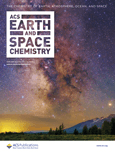
ACS Earth and Space Chemistry
Scope & Guideline
Connecting Chemistry with the Wonders of Earth and Space
Introduction
Aims and Scopes
- Atmospheric Chemistry:
Focuses on the composition, reactions, and transformations of atmospheric constituents, particularly regarding aerosols, pollution, and their effects on climate and air quality. - Geochemistry:
Investigates the chemical composition and processes of Earth materials, including soil, water, and sediment, to understand natural and anthropogenic influences on geochemical cycles. - Astrochemistry:
Explores the chemical processes occurring in space, including the formation of organic molecules in interstellar environments and the chemistry of planetary atmospheres. - Environmental Chemistry:
Examines the chemical interactions in various ecosystems, including the impacts of pollutants, nutrient dynamics, and the behavior of organic matter in aquatic and terrestrial environments. - Mineral-Water Interactions:
Studies the interactions between minerals and aqueous solutions, focusing on adsorption, dissolution, and the role of minerals in contaminant transport and transformation. - Innovative Analytical Techniques:
Utilizes advanced analytical methods and computational modeling to investigate complex chemical systems, providing insights into both laboratory and field-based studies.
Trending and Emerging
- Climate Change and Atmospheric Impacts:
Recent publications increasingly address the implications of climate change on atmospheric chemistry, with a focus on pollution sources, aerosol effects, and greenhouse gas dynamics. - Interdisciplinary Research Approaches:
There is a notable trend towards interdisciplinary studies that combine atmospheric, geological, and biological perspectives to address complex environmental challenges. - Innovative Detection and Monitoring Techniques:
Emerging methodologies, such as machine learning and advanced spectroscopy, are being utilized for real-time monitoring and analysis of atmospheric and environmental samples. - Planetary Science and Astrobiology:
Research exploring the chemical environments of other planets, particularly Mars and exoplanets, is on the rise, reflecting increased interest in astrobiology and the search for extraterrestrial life. - Microbial and Biogeochemical Interactions:
Investigations into microbial processes and their roles in biogeochemical cycles have gained momentum, emphasizing the importance of biological factors in environmental chemistry.
Declining or Waning
- Traditional Organic Geochemistry:
The emphasis on classical organic geochemistry, particularly in the context of fossil fuel analysis, has decreased as novel methodologies and interdisciplinary approaches gain prominence. - Static Modeling Approaches:
There is a waning interest in static modeling of geochemical processes, with a shift towards dynamic and integrated modeling approaches that account for temporal changes and interactions. - Geological Time Scales:
Research focusing solely on geological time scales without considering contemporary implications and real-time environmental changes appears to be less frequent. - Inorganic Chemistry of Less Common Elements:
Studies specifically targeting less common elements in environmental chemistry are becoming less prominent, possibly due to a growing focus on more prevalent elements and compounds.
Similar Journals
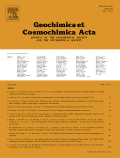
GEOCHIMICA ET COSMOCHIMICA ACTA
Unveiling the Mysteries of Geological and Cosmological ProcessesGEOCHIMICA ET COSMOCHIMICA ACTA is a premier journal dedicated to advancing the fields of geochemistry and petrology, published by Pergamon-Elsevier Science Ltd. With its ISSN 0016-7037 and E-ISSN 1872-9533, this esteemed journal has been at the forefront of scientific inquiry since its inception in 1950, with a strong commitment to disseminating high-quality research through 2024. Its reputation is underscored by an impressive impact factor and a ranking of #8 out of 154 in Earth and Planetary Sciences according to Scopus, placing it in the 95th percentile of its category. GEOCHIMICA ET COSMOCHIMICA ACTA serves as a critical resource for researchers, professionals, and students alike, offering insights into the complex interactions of geological and cosmological processes. While the journal is not open access, it remains a vital conduit for innovative research, fostering the scientific community’s understanding of earth materials and their significance.

Geochemical Perspectives Letters
Empowering the global community with open-access geochemical insights.Geochemical Perspectives Letters, published by the European Association of Geochemistry, is a leading open-access journal that has been at the forefront of geochemical research since its inception in 2015. Based in France, this journal is dedicated to disseminating high-quality, original research and reviews across the fields of Environmental Chemistry, Geochemistry, and Petrology, and Geology. With an impressive Q1 ranking in multiple categories, and notable Scopus rankings placing it among the top-tier journals in Earth Sciences, Geochemical Perspectives Letters aims to foster scientific dialogue and collaboration among researchers and professionals. Its open-access model ensures widespread dissemination of knowledge, making it accessible to a diverse audience, including students and seasoned experts alike. As the journal continues to converge research insights from 2015 to 2024, it remains a pivotal resource for those striving to understand and address the complexities of our planet's geochemical processes.

EARTH MOON AND PLANETS
Advancing Knowledge in Planetary Science and AstronomyEARTH MOON AND PLANETS, published by Springer, serves as a vital platform for researchers and professionals in the interdisciplinary fields of astronomy, planetary science, and earth sciences. With an ISSN of 0167-9295 and E-ISSN of 1573-0794, this journal has been disseminating knowledge since 1984 and continues to provide valuable insights into the complexities of celestial bodies and their interactions. Although currently ranked in the Q4 quartile across its relevant categories, including Astronomy and Astrophysics, Earth and Planetary Sciences, and Space and Planetary Science, the journal remains committed to fostering academic discourse and innovation in its field. Located in the Netherlands, at VAN GODEWIJCKSTRAAT 30, 3311 GZ DORDRECHT, the journal offers an array of research articles designed to inspire scholarly exploration and collaboration. Despite not providing open access options, it nevertheless plays a significant role in shaping the discourse around planetary research and is essential reading for anyone looking to deepen their understanding of earth, moon, and planetary sciences.
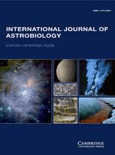
International Journal of Astrobiology
Innovating Astrobiological Research for a New EraInternational Journal of Astrobiology, published by Cambridge University Press, stands as a pivotal resource in the interdisciplinary realm of astrobiology, merging insights from Earth and Planetary Sciences, Ecology, Evolution, Behavior, and Systematics, as well as Physics and Astronomy. With a solid impact factor denoting its relevance—particularly as a Q2 journal in Earth and Planetary Sciences and strong rankings in Ecology and Space studies—this journal provides a platform for cutting-edge research and groundbreaking discoveries that investigate the potential for life beyond Earth and the conditions that support its existence. Since its inception in 2002, the journal has aimed to foster a deeper understanding of astrobiological concepts through high-quality articles, reviews, and discussions, making it an indispensable tool for researchers, students, and professionals alike. Although it operates under a subscription model, the journal's commitment to advancing knowledge in astrobiology remains paramount, inviting diverse contributions that span the complexities of life in the universe.

GEOCHEMISTRY INTERNATIONAL
Pioneering Research in Petrology and GeophysicsGEOCHEMISTRY INTERNATIONAL, an esteemed journal published by MAIK NAUKA/INTERPERIODICA/SPRINGER, serves as a vital platform for researchers in the fields of geochemistry, petrology, and geophysics. With a deep history reaching back to its inception, the journal spans significant converged years from 1977 to 1978 and continues its publication through 2024. Although it currently does not offer Open Access options, its scholarly impact is underscored by an established reputation indicated by its Q3 categorization in both Geochemistry and Petrology and Geophysics for 2023. Researchers can leverage this platform to disseminate groundbreaking findings and engage with contemporary discussions in Earth and planetary sciences, where it ranks at the 39th and 32nd percentiles within its respective categories. The journal is an essential resource for professionals, students, and scholars seeking to deepen their understanding of geochemical processes and evolve scientific discourse within this dynamic field.
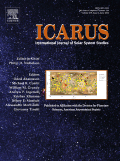
ICARUS
Connecting Scholars to the Stars and Beyond.ICARUS is a prominent peer-reviewed journal dedicated to advancing knowledge in the realm of Astronomy and Astrophysics, as well as Space and Planetary Science. Published by Academic Press Inc, Elsevier Science, this esteemed journal has been contributing to the scientific discourse since 1962 and will continue to do so well into 2024. With an impressive impact factor placing it in the Q2 quartile, ICARUS ranks among the top journals in its field, standing appropriately at #22 out of 90 in Astronomy and Astrophysics and #27 out of 104 in Space and Planetary Science according to Scopus metrics. Researchers, professionals, and students alike benefit from its comprehensive scope, which encompasses a wide array of topics related to planetary processes, space exploration, and astrophysical phenomena. Although it does not currently offer open access, the journal remains a critical resource for scholars seeking to disseminate their findings and engage with cutting-edge research in the exciting fields of astronomy and planetary science.

Earth and Space Science
Navigating the Nexus of Earth Sciences and Environmental Insights.Earth and Space Science, published by the American Geophysical Union, is a distinguished open-access journal that has profoundly impacted the realms of earth and planetary sciences as well as environmental science since its inception in 2014. With impressive rankings, including Q1 in both Earth and Planetary Sciences and Environmental Science for 2023, this journal ranks 38th out of 195 in the general Earth and planetary sciences category and 51st out of 219 in environmental science, showcasing its commitment to high-quality research dissemination. The journal serves as a vital platform for researchers, professionals, and students, fostering the exploration of critical topics and advancements within these pivotal fields. With an accessible format, researchers can benefit from the rich content available, furthering their knowledge and ensuring that groundbreaking discoveries reach a broader audience. The journal's ongoing commitment to open access aligns with contemporary trends in scholarly communication, emphasizing inclusion and collaboration in tackling pressing global challenges.

REVUE ROUMAINE DE CHIMIE
Pioneering Research: Where Romanian Chemistry Meets the WorldREVUE ROUMAINE DE CHIMIE is a distinguished academic journal in the field of chemistry, published by EDITURA ACAD ROMANE in Romania. With an ISSN of 0035-3930, this journal has been a valuable platform for disseminating original research and insights in the diverse realm of chemistry since its inception. The journal currently operates under a competitive tier, categorized in Q4 for miscellaneous chemistry fields, as reflected in its Scopus ranking of #348 out of 408, placing it within the 14th percentile. Aiming to foster scientific discourse and innovation, the REVUE ROUMAINE DE CHIMIE provides a repository of knowledge that is crucial for researchers, professionals, and students eager to advance their understanding and contribute to the global chemistry community. By bridging local and international research initiatives, this journal plays an essential role in enhancing the visibility of Romanian scientific contributions on the world stage.
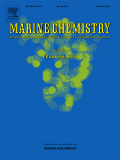
MARINE CHEMISTRY
Exploring the Depths of Chemical KnowledgeMARINE CHEMISTRY, published by Elsevier, is a premier international journal that has been at the forefront of advancing knowledge in the fields of chemistry, oceanography, and environmental science since its inception in 1972. As indicated by its impressive impact factor and its numerous Q1 rankings in Chemistry, Oceanography, and Water Science and Technology for 2023, the journal is a vital resource for researchers and professionals dedicated to addressing critical issues related to marine environments and their chemical dynamics. The journal publishes high-quality research that explores various aspects of chemical processes in aquatic systems, aiming to bridge the gap between theoretical studies and practical applications. With a significant emphasis on interdisciplinary work, MARINE CHEMISTRY serves as a platform for sharing innovative research findings that contribute to the sustainability and health of marine ecosystems. Although it is not an open-access publication, its comprehensive repository of scholarly articles remains accessible through institutional subscriptions, providing limitless opportunities for growth and discovery in the field.
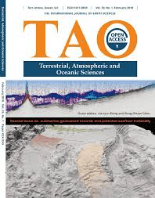
TERRESTRIAL ATMOSPHERIC AND OCEANIC SCIENCES
Innovating Research for a Sustainable PlanetTERRESTRIAL ATMOSPHERIC AND OCEANIC SCIENCES, published by SpringerNature, is a distinguished peer-reviewed journal that has been an essential platform for innovative research in the fields of atmospheric science, oceanography, and Earth and planetary sciences since its inception. With an Open Access policy established in 1990, the journal ensures wide dissemination of knowledge, allowing researchers, professionals, and students to access cutting-edge findings without restrictions. Based in Switzerland and featuring a comprehensive coverage from 1996 to 2024, the journal currently holds a Q3 ranking across various categories, indicating its growing significance in the scientific community. Although it is positioned within the 39th percentile in Earth and Planetary Sciences, its commitment to fostering high-quality research makes it a valuable resource for advancing understanding of terrestrial environments and their interconnections. Researchers seeking a platform for their work in atmospheric and oceanic sciences will find TERRESTRIAL ATMOSPHERIC AND OCEANIC SCIENCES to be an ideal venue for sharing their insights with a global audience.